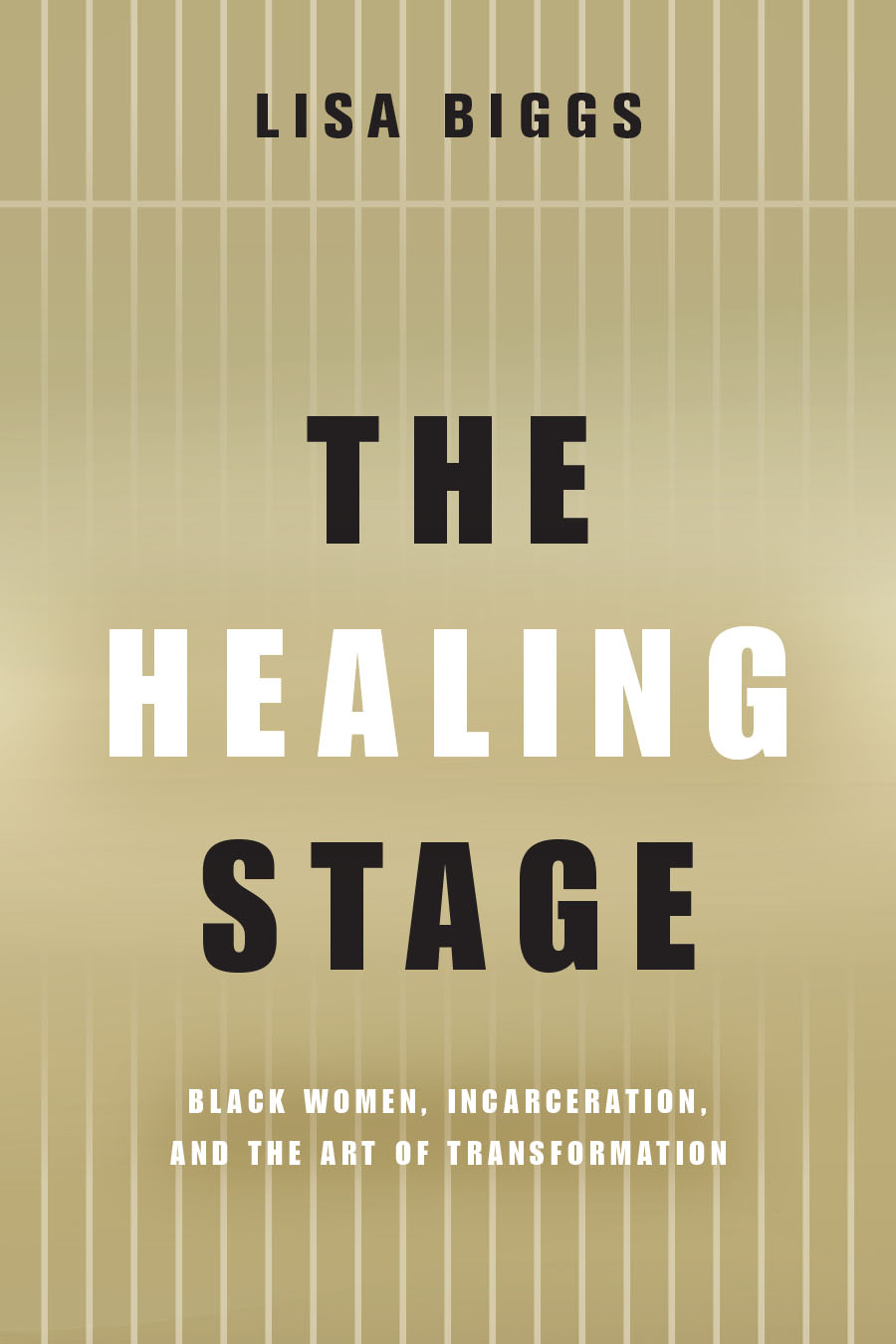The Book
The Healing Stage: Black Women, Incarceration, and the Art of Transformation
The Author(s)
Lisa Biggs

Incarceration traumatizes prisoners, particularly women of color. Disproportionately arrested as a consequence of misogynoir and selective law enforcement policies, indicted and convicted as a result of gender and racial biases in criminal justice, and subjected to sexual violence and horrific conditions in penitentiaries, incarcerated women, according to Lisa Biggs, are demeaned and emotionally damaged in penal facilities that reinforce inequality and social hierarchies. A “critical performance ethnographer,” Biggs explores innovative programs in which prison-arts ensembles stage theatrical events with incarcerated women to promote “self-repair” and emotional healing. At least in theory, they contribute to wider social-justice reform as well. Based on extensive fieldwork conducted between 2008 and 2018, including attending drama classes, workshops, rehearsals, and performances by four prison-theater organizations, three in the United States and one in South Africa, Biggs examines the transformative and therapeutic impact of these programs. The activities and performances, she argues, restore a sense of agency and dignity in the participants. Though the book largely focuses on the intersection of race, gender, and incarceration in twenty-first-century America, Biggs provides three historical chapters—one on the long history of U.S. race and gender relations, the second on the history of criminal justice and mass incarceration, and the third chapter on the development of African American women’s visual and performing arts since the late nineteenth century—to frame and introduce her ethnographic analysis.
Theater programs behind bars, she explains, change the lives of incarcerated African American performers, enabling the participants to recover from some of the damage and trauma inflicted, often by design, in modern correctional institutions. Simply put, they “stage healing.” Almost magically, the productions empower the participants to share their trauma, bond with other incarcerated women, confront the injustices they have endured, shed the suffocating shame, victimization, bitterness, and despondence that they have experienced in prison, and begin to heal. Writing from a first-person perspective, Biggs describes the personal journeys of self-discovery and spiritual rebirth that she observed in the ensembles’ workshops and performances as the participants gained self-confidence and often broke free from the oppressive and “repressive patriarchal logic of the penal state” (p. 127). The public performances staged by the ensembles also encourage audiences to rethink entrenched notions of gender, race, and social justice. Thus, the productions have the potential to transform the attitudes and lives of everyone involved. The Healing Stage blends an analysis of the author’s ethnographic research with a plea for policy makers and criminal-justice professionals to expand these therapeutic programs. “We need artists’ help,” she writes, “to dismantle the criminal legal system as we know it and to birth new cultural modalities that value Black women’s lives” (p. 218). The book does not, however, explain the inclusion of the South African ensemble or how the fieldwork in Johannesburg fits with a study of the American carceral system.
Evaluating Biggs’s assertion about the wider impact of prison-arts program is difficult. The segment of the public drawn to the productions tends to be sympathetic toward incarcerated women or at least open-minded, whereas the most zealous proponents of law-and-order policing and the most vehement defenders of gendered and racialized criminal-justice policies likely do not attend these performances. But her ethnographic research provides compelling evidence of the therapeutic power of the programs for participants. Biggs may be correct regarding the impact on audiences, though her argument that the plays and readings encourage “spectators to reconsider their perceptions of justice” (p. 89) is more suggestive than proven.
More problematic, however, is Biggs’s use of historical evidence to frame her examination of these contemporary prison-arts programs. By her own admission, she does not focus on the details. She acknowledges, for example, being “less concerned about chronological or taxonomic neatness than about relaying key moments that contextualize the current crisis and provide radically new ways to (re)read the hegemonic state-sponsored narratives about incarcerated Black women’s experiences” (p. 31). Thus, Biggs draws selectively from the historical record, devoting modest attention to chronology, place, or contingency. Her examples span centuries, move forward and backward in time, blur regional differences in gender, racial, and legal ideologies, and present evidence temporally disconnected from her assertions. For instance, she describes a 1918 effort to control the labor of African American women to document changes occurring in the 1860s (p. 52).
As a result of this approach to evidence, The Healing Stage flattens and compresses the historical context. The history of misogynoir and criminal justice is presented as a largely static “before” image. Missing is a precise exploration of the complex, contingent processes through which ideas and policies developed, became institutionalized, and emerged as foundational components of modern American criminal justice. Biggs’s description and analysis of historical forces is distorted rather than explicitly wrong, but what is lost in her narrative is more than mere “neatness.” These flaws notwithstanding, The Healing Stage is an engaging book and makes a thoughtful contribution to the scholarship on the contemporary crisis in American social justice.
About the Reviewer
Jeffrey S. Adler is professor of history and Distinguished Teaching Scholar at the University of Florida. His research explores the history of crime and racial violence in the United States, and his most recent book, “Bluecoated Terror”: Jim Crow New Orleans and the Roots of Modern Police Brutality, will be published by the University of California Press in 2024.

0